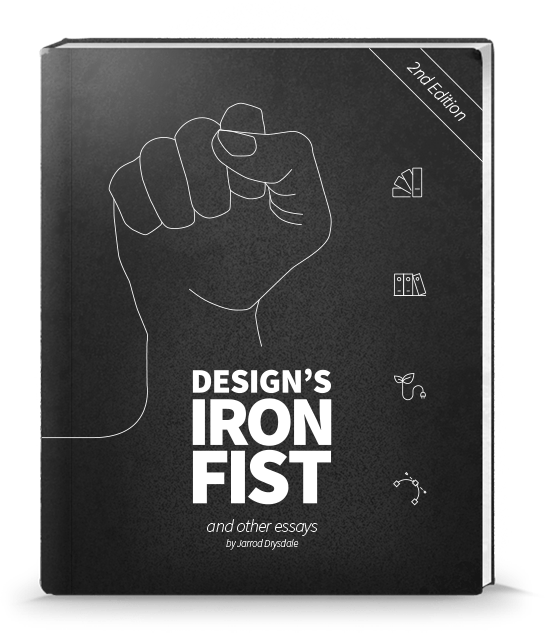I’ve had to relearn certain aspects of design now that I’m running my own business.
I’m making decisions I’d have considered a major error only a short time ago. Like putting the logo below the fold. Or using a color that doesn’t match the rest of the palette on purpose. On purpose!
The proof it works is in the numbers. Cascade earned a 12-15% conversion rate, depending on the traffic source. That is higher than Bootstrapping Design’s landing page conversion rate of 8-12%.
Designing for your own business is different than designing for clients. What follows are my hard realizations after living on product income for a year.
(Also note, I’m discussing professional products only. Consumer products are a wild goose chase, as far as I’m concerned.)
The logo below the fold
Customers are more important than me
Designers revere conventions. Putting the logo in the top left corner of the site is supposed to be an important convention.
But for small startups like mine, it’s the wrong decision.
Putting the logo in the top left corner is wrong because it makes the statement that the person or company operating the website is the most important information on the page. It implies: “Hey visitor, you should know who I am before you read anything. I’m kind of a big deal.”
Brand awareness doesn’t exist if your customers number in the hundreds. Designing for a small business is totally different than designing for a large brand (or a brand that wants to become large).
Visitors don’t care about your logo and they don’t even care who you are (yet). They are looking for the answers to two questions: What problem does it solve? Do I have that problem?
You’ll notice that in my design for Cascade, I placed the logo below the fold and low on the visual hierarchy. The answers to those two important questions are right at the top where the logo would normally be. The only people who even see the logo are those who identify with the problem and intended audience. People who don’t leave the page immediately. That’s great because throughout the rest of the page, I know exactly who I am writing to.
So stop putting the logo at the top of the visual hierarchy. Instead, write about the problem your business is proposing to solve. Write about what type of person usually has that problem. Then, lower down on the page, explain how your business is the answer and ask them to buy. And place the logo there too.
Your job as a designer and writer is to show the visitor that they have a problem and to convince them to continue reading about your solution. If you succeed in this, people will pay you.
The ugly button
Business goals are more important than taste
(I bet you never thought you’d see a designer write that!)
Cascade’s landing page sports a shiny green button. The button isn’t ugly in and of itself. But set amongst the intense orange that dominates the composition, it clashes—badly. And, it clashes on purpose.
I chose the bright, clashing green color for the button because I wanted visitors to see it. Originally, the color scheme for the site included a complimentary blue. I used that blue in several of the illustrations, but the buttons were blue too. When evaluating the design, I realized that this was a problem. The buttons had similar visual prominence to the other elements on the page, and that didn’t fit my goals for the visual hierarchy.
My plan was to place the buttons lower on the page. After all, no one is going to sign up before I’ve explained why they’d want to. But, when the visitor does scroll to a point where the button is visible, I wanted it to be the most obvious element on screen.
A pretty blue button that matches the rest of the design did not accomplish this. So, I stripped the blue from the design and chose a clashing green color for the buttons. Now when you scroll far enough to see a button, it is impossible to miss. The ugly aesthetic of the button supports my goals perfectly.
With this change, I made a conscious decision: my business goals were more important than making the design attractive. I don’t care if Cascade wins design awards. It doesn’t matter if other designers like the page. It’s not for them. All that matters is that the page connects with technical startup founders who struggle with design.
Furthermore, rather than merely assuming I met my goals, I used analytics. Every metric shows that my design is successful.
It’s okay to break the rules.
I’m not trying to convince you to always place the logo below the fold or to always use an ugly button. But I do hope these examples give you the confidence to break best practice when you discover it’s necessary.
Doing this is not nearly as big of a risk as you’d think. Designers might point out the flaws in rude tweets, but they could surprise you. Some might even be smart enough to catch onto what you’re doing and write a blog post about it, like Sacha Grief’s writeup of the Cascade landing page.
Regardless, be proud that you’re prioritizing efficiency over vanity. Making these kinds of decisions is the right way to run a business, and your customers will be grateful. And they’ll show that gratitude by paying you.
